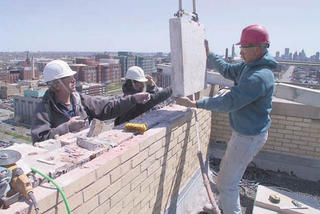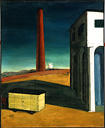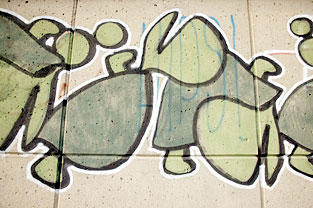My Friday night plans:
Purchase toilet paper.
Scare hell out of mice in bedroom by pretending to be powerful administrator mouse.
Make tea in ganesha teapot.
Watch film "She's gotta have it" (a spike lee joint).
Friday, September 30, 2005
listening to:
Fugees, "Fugees on the Mic"
on:
ipod
while brushing:
my teeth
with:
Keroppi the Frog toothbrush
in:
the office bathroom
current outfit:
aero sweats and a hoodie
nose jewel:
aquamarine
on:
ipod
while brushing:
my teeth
with:
Keroppi the Frog toothbrush
in:
the office bathroom
current outfit:
aero sweats and a hoodie
nose jewel:
aquamarine
current emotion: hungry
Current affirmations: I pressed "10" on the elevator panel without throwing up.
There is a fine line between sanity and insanity: I am just trying to stay on the side that has the refrigerator.
There is a fine line between sanity and insanity: I am just trying to stay on the side that has the refrigerator.
Thursday, September 29, 2005
blogging, computer history and the history of Metro Detroit
Selfe and Hawisher use narrated timelines as a way of linking technological developments to their wider "cultural ecologies" (p. 165).
You might have noticed this on pp. 63-69 ("cultural ecology of the 1960s an 1970s"), pp 79-82 ("cultural ecology of the 1970s, 1980s, and 1990s") and on pp 165-170 ("cultural ecology of the 1940s, 1950s and 1960s").
In fact, if you DIDN'T notice these timelines while doing the assigned reading, you probably were stoned. Genre note: I am permitted to say "stoned" because this is my blog. The cultural ecologies are conveniently indexed on p. 256.
Selfe and Hawisher chose to compare the timeline of technological development with political and national history.
However, you can learn tres interesting stuff if you mix it up a little and compare the social history of technology to the history of a particular region.
Like, for instance, the history of Metro Detroit.
1919
Josephine Davis graduates law enforcement training as the first female police officer in Detroit. {Sugrue}
Electrical Experimenter reported that managing director Godfrey Issacs "foresees the day, not far distant, when pocket wireless telephones will be in wide use" {Timeline of Computing History, "1919"}.
1943
Ladies' Home Journal publishes the article "Do Women Have to Talk So Much" (Selfe and Hawisher, p. 166).
FHA builds concrete wall to enforce racial segregation between Birwood and Mendota streets in Northwest Detroit. The wall breaks at cross-streets, "segregating" only the backyards of houses that are adjacent to a neighboring childrens' park where young mothers gathered with their children. {see, for instance Sugrue, p. 67}
1945
Public school records show that "Why I like or do not like negroes" is a standard topic for the sixth grade arguementative essay at Van Dyke School in Northeast Detroit. "They try to mix with white people and we don't want them to", wrote a sixth grader named Mary Conk, "they wanted to live on Detroit and we didn't want them to" {Sugrue, p. 218}.
ENIAC, the first modern computer, is constructed. ENIAC's chief application was to "discriminate the sign of a number and compare quantities for equality" {Timeline of Computing History, "1945"}.
2005
Federal prosecutions under the CANSPAM Act of 2005 kick off in the northern suburb of West Bloomfield, where approximately eight spam gangs have been discovered. Ps, that is an atypically high number of spam gangs per square foot.
http://www.detnews.com/2004/technology/0404/29/a01-137416.htm
http://www.freep.com/money/tech/mwend22_20021122.htm
Epidemeologists discover that SPAM proliferation is a highly accurate model for the AIDS vector. http://www.theinquirer.net/?article=21526
A coding error by the City of Detroit "misplaces" funding for the Wellness House, a local HIV/AIDS public health organizations, in the account of another agency.
http://www.freep.com/news/health/aids31e_20040831.htm
Notice that I can get away with constructing evocative "peices" of a timeline because this is my blog. The continuuity demand is lower than in a PPT presentation. The point is to inspire directions for further research, not to "finish" an idea.
You might have noticed this on pp. 63-69 ("cultural ecology of the 1960s an 1970s"), pp 79-82 ("cultural ecology of the 1970s, 1980s, and 1990s") and on pp 165-170 ("cultural ecology of the 1940s, 1950s and 1960s").
In fact, if you DIDN'T notice these timelines while doing the assigned reading, you probably were stoned. Genre note: I am permitted to say "stoned" because this is my blog. The cultural ecologies are conveniently indexed on p. 256.
Selfe and Hawisher chose to compare the timeline of technological development with political and national history.
However, you can learn tres interesting stuff if you mix it up a little and compare the social history of technology to the history of a particular region.
Like, for instance, the history of Metro Detroit.
1919
Josephine Davis graduates law enforcement training as the first female police officer in Detroit. {Sugrue}
Electrical Experimenter reported that managing director Godfrey Issacs "foresees the day, not far distant, when pocket wireless telephones will be in wide use" {Timeline of Computing History, "1919"}.
1943
Ladies' Home Journal publishes the article "Do Women Have to Talk So Much" (Selfe and Hawisher, p. 166).
FHA builds concrete wall to enforce racial segregation between Birwood and Mendota streets in Northwest Detroit. The wall breaks at cross-streets, "segregating" only the backyards of houses that are adjacent to a neighboring childrens' park where young mothers gathered with their children. {see, for instance Sugrue, p. 67}
1945
Public school records show that "Why I like or do not like negroes" is a standard topic for the sixth grade arguementative essay at Van Dyke School in Northeast Detroit. "They try to mix with white people and we don't want them to", wrote a sixth grader named Mary Conk, "they wanted to live on Detroit and we didn't want them to" {Sugrue, p. 218}.
ENIAC, the first modern computer, is constructed. ENIAC's chief application was to "discriminate the sign of a number and compare quantities for equality" {Timeline of Computing History, "1945"}.
2005
Federal prosecutions under the CANSPAM Act of 2005 kick off in the northern suburb of West Bloomfield, where approximately eight spam gangs have been discovered. Ps, that is an atypically high number of spam gangs per square foot.
http://www.detnews.com/2004/technology/0404/29/a01-137416.htm
http://www.freep.com/money/tech/mwend22_20021122.htm
Epidemeologists discover that SPAM proliferation is a highly accurate model for the AIDS vector. http://www.theinquirer.net/?article=21526
A coding error by the City of Detroit "misplaces" funding for the Wellness House, a local HIV/AIDS public health organizations, in the account of another agency.
http://www.freep.com/news/health/aids31e_20040831.htm
Notice that I can get away with constructing evocative "peices" of a timeline because this is my blog. The continuuity demand is lower than in a PPT presentation. The point is to inspire directions for further research, not to "finish" an idea.
special topics
Important ground to cover in e-conversation with Dr. Johnson-Eilola:
1. Hypertext-supported collaboration in the (ie my) Freshman English classroom: capabilities and limits of.
2. (re) building Ootlet's mechanical database: working with technologically "downshifted" models of hypertext in English 1020.
3. Markup languages and teacher comments: hypertextual systems for responding to student writing. Poss. theoretical "link" to comment spam?
4. Dialect diversity in online writing environments.
5. Technology and writing: metaphors and images for the pace of innovation (cite: the International Multiliteracies Project).
6. Accessing your inner database: making technical communication relevant for comp/rhet people.
1. Hypertext-supported collaboration in the (ie my) Freshman English classroom: capabilities and limits of.
2. (re) building Ootlet's mechanical database: working with technologically "downshifted" models of hypertext in English 1020.
3. Markup languages and teacher comments: hypertextual systems for responding to student writing. Poss. theoretical "link" to comment spam?
4. Dialect diversity in online writing environments.
5. Technology and writing: metaphors and images for the pace of innovation (cite: the International Multiliteracies Project).
6. Accessing your inner database: making technical communication relevant for comp/rhet people.
committee work
Sharon has named me director of the Writing Center prayer team : Spiritually, we are able to stay on the same page as long as no pictures of god get drawn.
Wednesday, September 28, 2005
hip hop:
A resource for helping your students discover the intuitive logic of subject-object-verb relationships.
fantasy conversation
I wish there were a way to tell someone that they are an enormous honking jerk but you still are their friend and love them, in the same breath. Without having them hyperfocus on the part about being friends and miss the part about how you stayed up last night, biting your pillow about something fucked up that they have done.
clicking "refresh"
1:22 pm: Established email contact with Johndan Johnson Eilola.
And Johndan is perfectly capable of writing a brush-off email, as seen on the ATTW-L.
And Johndan is perfectly capable of writing a brush-off email, as seen on the ATTW-L.
auto-reply
12: 23 pm: Dissertation-related brush-off email from Dr. Geneva Smitherman appears in email inbox.
Have proposed i-text analysis of brush-off emails to Ellen as alternate dissertation topic.
Have proposed i-text analysis of brush-off emails to Ellen as alternate dissertation topic.
objective correlative
staring hard at the fitted cover that slips off my mattress to symbolize anger.
Tuesday, September 27, 2005
auto reply
a'o know, I said and felt my eyes snap shut like downcast half-moons. The concrete bench outside state hall made stoney impressions in my abdomen.
Renuka and Hilary do peer review
title of exercise: Secondhand evidence.
materials required:
1 rough draft of an academic essay (such as a seminar paper)
1 pair of safety scizzors
jar of paper mache paste
Miss Renuka: Hello, English 6010. In our last meeting, we engaged in a read-aloud protocol. That exercise helped you transform your prewriting into a rough draft.
Miss Hilary: Today, we are going to engage in a draft exchange that helps you extend and refine support for your clai--
Shashi! Stop eating the paste--
Renuka: As Miss Hilary is saying, every draft exchange should have a specific objective vis a vis the development of your wider project.
Wilkie: Theoretically, though, why is that? Shouldn't a draft exhange be open-ended rather than focused on 1 predetermined agenda?
Hilary: (thinking seriously) Wilkie, that's an insightful question. To reply: because, every draft exchange should have a specific objective vis a vis the development of your wider project.
Sharon: I think that, tautologically, Hilary is trying to say
Jeff: That the heuristic "1 objective per draft exhange" is a conventional classroom practice. Therefore, its rationale is tautological.
Miss Renuka: ok. Theoretically, the purpose of this draft exhange is to force you "back into the chaos, back to the point where you are shaping and restructuring your meaning" (Sommers 390). We are going to "sabotage" your conviction that your draft is complete.
Hilary: And how! More specifically, the peer review is designed to help you locate and address "breaks in logic, disruptions in meaning, or missing information" (391).
Miss Renuka: Let the chaos begin! Please sort youselves into pairs of two.
Hilary: (clearing her throat) Academic chaos is, you know, very orderly.
Miss Renuka: Hilary, I really would appreciate it if you um put down those scizzors while you talk.
Hilary: We'll start with the read-aloud protocol for draft exhanges. You know the drill: no touching your partners' draft (or other personal items).
Miss Renuka: As your partner reads her draft aloud, listen specifically for claims and support. When your partner has finished reading, have a conversation in which you identify any evidence that contradicts, or fails to adequately support, the "principal arguments running through the text" (391).
Hilary (to Renuka): Do we need to specify protocol for having a conversation?
Renuka: Wrong room, Hilary. These are graduate students, not autistic people.
Hilary: My people would have a protocol, is all I'm saying.
Sharon (in a warning tone): Hilary.
Renuka: Now, this is the fun part!
Hilary: Once you have identified the weakest peices of supporting evidence for the "principal arguement" running through your text,
Renuka: you pick up your scizzors
Hilary: and simply cut that peice out of your text
Renuka: MLA citation and all!
Hilary: Snip!
Renuka: Like, you ARE the weakest link! Goodbye.
Hilary: be sure to cut drafts, not people.
Renuka: Okay, this final part is really cool.
Jeff put his forehead in his hands.
Hilary: After you have finished literally cutting out the weakest peices of supporting evidence in your draft,
Renuka: you bring them up to this big long table.
Hilary: So, what we are going to end up with at the end of the exercise is: a table of cast-off evidence.
At the end of class, each student will come up to the table of cast off evidence and select 1 peice of evidence that can be woven into her own paper
Renuka: --as supporting evidence--
Hilary:--wider contextual information--
Renuka:--or an anectdotal connection.
Hilary: This structured "chaos" allows you to both disrupt and refine your own pattern of evidentiary support--
Renuka: and to conceptualize connections between your own project and other students' work in the course.
Hilary: As your homework assignment, each student will go home and find a way to "paste" the peice of "secondhand" evidence into her paper.
Renuka: Warning: this step requires conceptual as well as syntactical adjustments. Ie, you will have to revise thesis and topic sentences as well as the language you use to introduce the evidence.
Hilary and Renuka: (to the tune of "tradition") Revision! Revision!
Hilary: Actually Sharon made up the comp/rhet adaptation of Fiddler, but so far there is only 1 word to the song.
Renuka: Still, it's catchy: Revision!
Jeff: Make it stop.
(the end).
materials required:
1 rough draft of an academic essay (such as a seminar paper)
1 pair of safety scizzors
jar of paper mache paste
Miss Renuka: Hello, English 6010. In our last meeting, we engaged in a read-aloud protocol. That exercise helped you transform your prewriting into a rough draft.
Miss Hilary: Today, we are going to engage in a draft exchange that helps you extend and refine support for your clai--
Shashi! Stop eating the paste--
Renuka: As Miss Hilary is saying, every draft exchange should have a specific objective vis a vis the development of your wider project.
Wilkie: Theoretically, though, why is that? Shouldn't a draft exhange be open-ended rather than focused on 1 predetermined agenda?
Hilary: (thinking seriously) Wilkie, that's an insightful question. To reply: because, every draft exchange should have a specific objective vis a vis the development of your wider project.
Sharon: I think that, tautologically, Hilary is trying to say
Jeff: That the heuristic "1 objective per draft exhange" is a conventional classroom practice. Therefore, its rationale is tautological.
Miss Renuka: ok. Theoretically, the purpose of this draft exhange is to force you "back into the chaos, back to the point where you are shaping and restructuring your meaning" (Sommers 390). We are going to "sabotage" your conviction that your draft is complete.
Hilary: And how! More specifically, the peer review is designed to help you locate and address "breaks in logic, disruptions in meaning, or missing information" (391).
Miss Renuka: Let the chaos begin! Please sort youselves into pairs of two.
Hilary: (clearing her throat) Academic chaos is, you know, very orderly.
Miss Renuka: Hilary, I really would appreciate it if you um put down those scizzors while you talk.
Hilary: We'll start with the read-aloud protocol for draft exhanges. You know the drill: no touching your partners' draft (or other personal items).
Miss Renuka: As your partner reads her draft aloud, listen specifically for claims and support. When your partner has finished reading, have a conversation in which you identify any evidence that contradicts, or fails to adequately support, the "principal arguments running through the text" (391).
Hilary (to Renuka): Do we need to specify protocol for having a conversation?
Renuka: Wrong room, Hilary. These are graduate students, not autistic people.
Hilary: My people would have a protocol, is all I'm saying.
Sharon (in a warning tone): Hilary.
Renuka: Now, this is the fun part!
Hilary: Once you have identified the weakest peices of supporting evidence for the "principal arguement" running through your text,
Renuka: you pick up your scizzors
Hilary: and simply cut that peice out of your text
Renuka: MLA citation and all!
Hilary: Snip!
Renuka: Like, you ARE the weakest link! Goodbye.
Hilary: be sure to cut drafts, not people.
Renuka: Okay, this final part is really cool.
Jeff put his forehead in his hands.
Hilary: After you have finished literally cutting out the weakest peices of supporting evidence in your draft,
Renuka: you bring them up to this big long table.
Hilary: So, what we are going to end up with at the end of the exercise is: a table of cast-off evidence.
At the end of class, each student will come up to the table of cast off evidence and select 1 peice of evidence that can be woven into her own paper
Renuka: --as supporting evidence--
Hilary:--wider contextual information--
Renuka:--or an anectdotal connection.
Hilary: This structured "chaos" allows you to both disrupt and refine your own pattern of evidentiary support--
Renuka: and to conceptualize connections between your own project and other students' work in the course.
Hilary: As your homework assignment, each student will go home and find a way to "paste" the peice of "secondhand" evidence into her paper.
Renuka: Warning: this step requires conceptual as well as syntactical adjustments. Ie, you will have to revise thesis and topic sentences as well as the language you use to introduce the evidence.
Hilary and Renuka: (to the tune of "tradition") Revision! Revision!
Hilary: Actually Sharon made up the comp/rhet adaptation of Fiddler, but so far there is only 1 word to the song.
Renuka: Still, it's catchy: Revision!
Jeff: Make it stop.
(the end).
Sunday, September 25, 2005
Subscribe to:
Posts (Atom)



